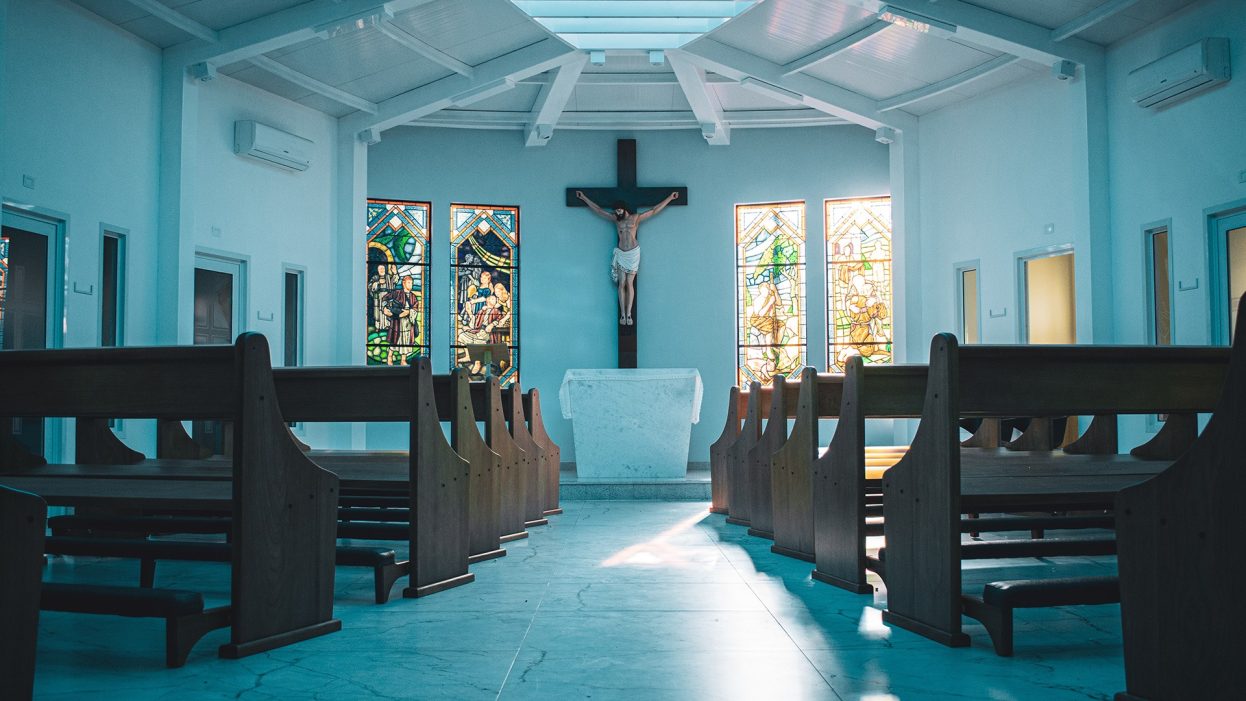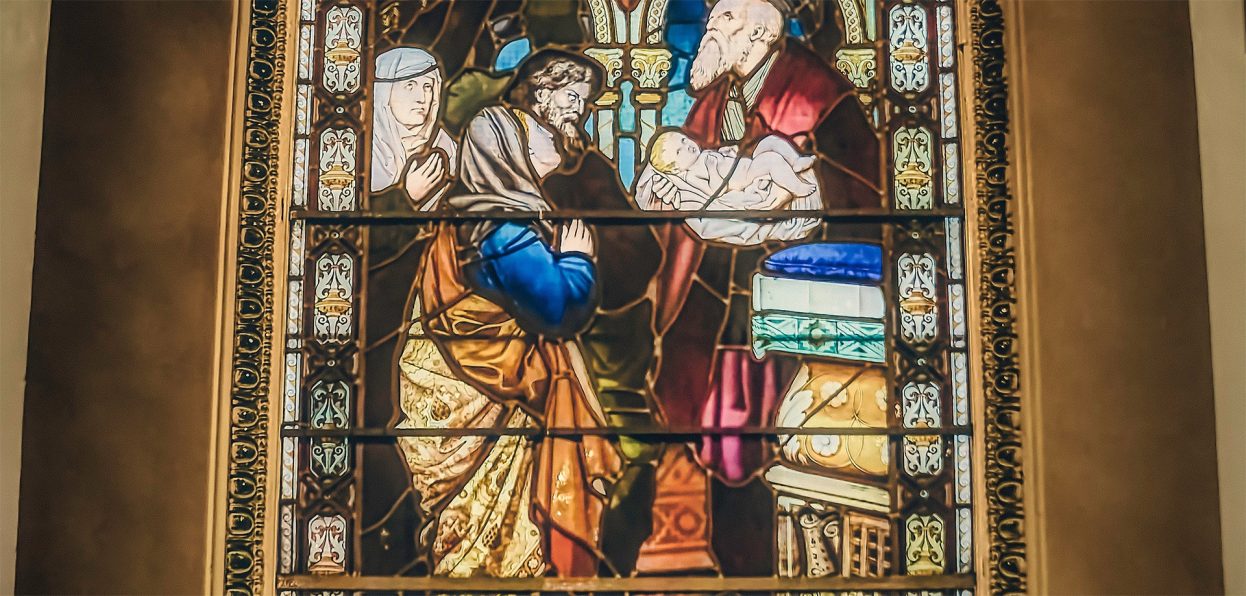History, Similarities, Differences, & FAQs
Moreover, Christianity is one of the most diverse religions in the world. Additionally, Christianity is known the world over as the largest religion with a followership of up to 2.4 billion people.
However, the religion is split into different denominations like Catholicism, Protestantism, Anglican, Pentecostal, Seventh-Day Adventist, and many more.
As such, people who are not familiar with the beliefs of certain denominations may have a hard time understanding the doctrinal teachings of Christianity.
This is one of the reasons why the topic of Catholicism vs. Protestantism was coined. In as much as both groups believe in the same God and identify as Christians, they have had several differences, especially in the spiritual and political levels.
That being said, the fact that a group of believers categorizes themselves as Christians does not mean they share the same beliefs in all aspects of worship. This has caused many problems among Christians both in the past and present.
Most conflicts among Christians usually occur when a particular denomination feels that their theological doctrine is the only divine truth.
Christians who view their teachings as the divine truth believe that anybody who is not part of it is in the wrong and will not receive God’s grace and mercy on Judgment Day.
In some cases, however, conflicts may come about as a result of political, social, and cultural differences between two or more Christian denominations.
When it comes to Catholicism and Protestantism, the followers of the latter felt that some Catholicism ideas were not right, and this caused a split in the early Christian church.
The History Of Catholicism And Protestantism
 To get a better understanding of how the Catholic-Protestant conflict came to be, let us look at a brief history of the early Christian Church.[/caption]To get a better understanding of how the Catholic-Protestant conflict came to be, let us look at a brief history of the early Christian Church.
To get a better understanding of how the Catholic-Protestant conflict came to be, let us look at a brief history of the early Christian Church.[/caption]To get a better understanding of how the Catholic-Protestant conflict came to be, let us look at a brief history of the early Christian Church.
As a religion, Christianity was founded by Jesus Christ in the 1st century. Through his teachings and divine works, Jesus was able to gain large followership by teaching people about God’s Kingdom and its significance to humans.
However, the first Christian church was formed later on after Jesus chose his Apostles to help him in spreading the gospel.
The Apostles promoted the teachings of Jesus Christ even after his death, and this played a crucial role in the success of Christianity, especially in the Roman Empire.
In 313, Constantine the Great, also known as Emperor Constantine I, legalized Christianity and advocated for various Christian teachings throughout the Roman Empire. This led to the birth of Catholicism as the true Roman religion.
With time, the denomination spread to neighboring regions, the West, and even countries like Germany through missionary activities that were supported by the Roman Catholic Church.
Nonetheless, not all people accepted the teachings of the Catholic church with open arms due to the underlying social, religious, ethnic, and colonial differences. This is what led to the formation of Protestantism.
Catholicism vs. Protestantism: The Reformation
 As stated earlier, there was a split in the early Christian church because some people did not support the ideas promoted by the Roman Catholic Church.
As stated earlier, there was a split in the early Christian church because some people did not support the ideas promoted by the Roman Catholic Church.
This led to a religious revolution famously known as the Reformation or Protestant Reformation.
The Reformation was championed by a German monk called Martin Luther in the 16th century, and it is believed that he got help from fellow scholars like John Calvin.
Martin Luther was against several teachings provided by the Roman Catholic Church. As a result, he came up with a list of propositions and questions that he thought were worthy of debate.
Luther’s document of disputation against the beliefs and teachings of Catholicism is known as The Ninety-Five Theses. This document did not only question Catholicism practices but also criticized the fundamental doctrinal ideas in the Roman Catholic Church.
One of the main ideas that Luther penned in his list is that salvation can only be achieved through faith and not by one’s deeds. As such, he postulated that followers of the Roman Catholic Church could not buy their salvation from the church.
Another key issue that was brought out in The 95 Theses is the idea that the pope only had the power to forgive sins committed against the Roman Catholic Church but not against God.
Martin Luther also argued that the Roman Catholic Church was exploiting the poor in society. According to Luther, the pope was to provide the money needed to build basilicas and not the poor.
The spread of these ideas throughout Europe sparked a revolution that led to the formation of the modern-day Protestant Church.
Besides, Protestantism derives its name from the word ‘protest’, thus suggesting their protest against the teachings of Catholicism.
That being said, a group of people who supported Martin Luther’s religious arguments broke all ties with the Roman Catholic Church and focused on promoting Protestantism ideas.
According to recent statistical reports, Protestantism has a followership of between 900 million and 1 billion.
On the other hand, Catholicism has up to 1.3 billion followers. These numbers can give you a rough idea as to which of the two denominations was founded first.
Similarities Between Catholicism And Protestantism
Since both denominations fall under Christianity, they share several similarities when it comes to their beliefs and religious practices.
As a matter of fact, the fundamental beliefs of Protestantism and Catholicism are somewhat based on the same doctrinal principles.
The difference mainly comes in the way they conduct themselves and the ideas that they hold about certain biblical teachings.
Here are some of the similarities between Catholicism and Protestantism;
- Belief In God as The Creator
-Both Catholics and Protestants believe that there is only one God and that he created the world and everything in the universe.
- Followers of Jesus Christ
-Catholicism and Protestantism teachings recognize Jesus Christ as God’s son who was sent to die for our sins.
-According to Catholics and Protestants, all humans are born with original sin because Adam and Eve disobeyed God. However, when Jesus died, he made it possible for humans to restore the lost relationship with God through the forgiveness of sins.
-Both denominations encourage their followers to imitate Christ in all that they do regardless of whether they are in church or not.
- The View Of The Bible As Gods Word
-The other thing that Catholics and Protestants have in common is their belief in the Bible as God’s divine word.
-Also, the Bible is authoritative and offers spiritual counsel from the creator himself.
- Belief In The Existence Of Heaven
-Protestants and Catholics believe that when one lives a life that is in accordance with Christ’s teachings, they will go to heaven.
Catholicism vs. Protestantism: Differences
Theological differences between Catholicism and Protestantism have greatly affected how the two denominations relate to each other.
Most of the differences are those that were championed by Martin Luther in his document— The 95 Theses.
1. Understanding Religious Rituals
- Catholicism has up to seven sacraments that adherents can partake in. These include baptism, the Eucharist, ordination, confirmation, last rites, confession, and marriage.
- Protestantism, on the other hand, teaches that the Eucharist and baptism are the only sacraments prescribed in the Bible.
2. Existence of Purgatory
- According to the teachings of the catholic church, believers who die in God’s grace go to purgatory for purification.
- Protestants reject this teaching since they don’t believe in the existence of purgatory as an after-life experience.
3. Celibacy
- Celibacy is compulsory for all catholic priests since it symbolizes that they are fully committed to serving the church and Jesus Christ.
- However, Protestantism is not guided by this obligation as it is one of the issues that Martin Luther was against.
4. Marian Dogmas
- The teachings of Catholicism revere Mary, the mother of Christ, as the Queen of Heaven, and the mother of the Church.
- Protestants, however, only view Mary as the mother of Jesus Christ and reject other teachings provided by the catholic church.
5. Papal Primacy
- Protestantism does not in any way support papal primacy since protestants claim that the dogma goes against Bible teachings.
- Catholics believe in the infallibility of the pope and also consider the pope as the direct successor of St. Peter.
Note: Catholicism and Protestantism have other similarities and differences. However, the ones listed above are some of the commonly used points when comparing the two denominations.
Final Verdict
Despite belonging to the same religion, Catholicism and Protestantism have distinguishing beliefs and practices that separate them from each other, thereby bringing about the topic of Catholicism vs. Protestantism. Nonetheless, they share fundamental doctrinal teachings that were passed down from the early Christian church.
Frequently Asked Questions
Why Did Protestants Split From Catholic Church?
The exodus of protestants from the catholic church was sparked by the Reformation, which was advocated for by Martin Luther in 1517.
Can Protestant priests and Catholic priests marry?
Protestant priests are allowed to marry but Catholic priests are obligated to practice celibacy.
Is Catholicism more popular than Protestantism?
As of now, Catholicism has approximately 1.3 billion followers, while Protestantism has between 900 million to 1 billion members from different parts of the world.

